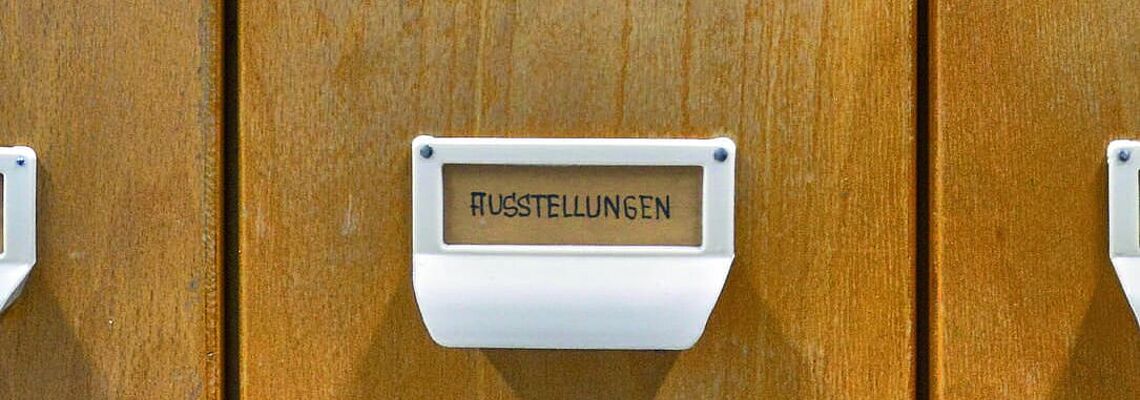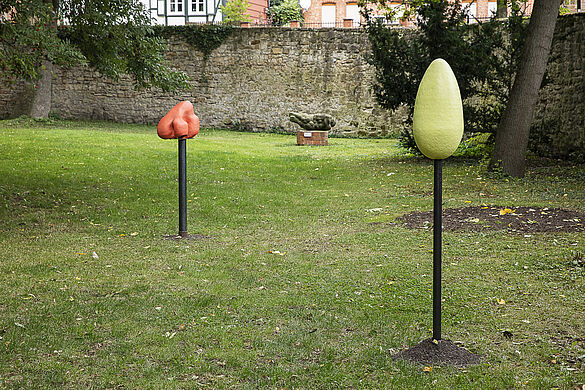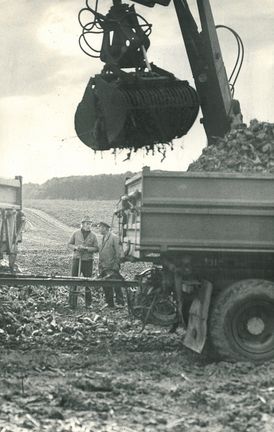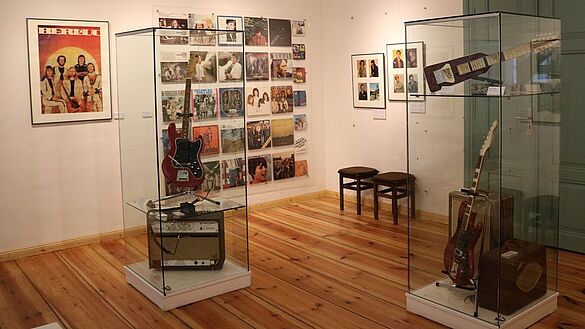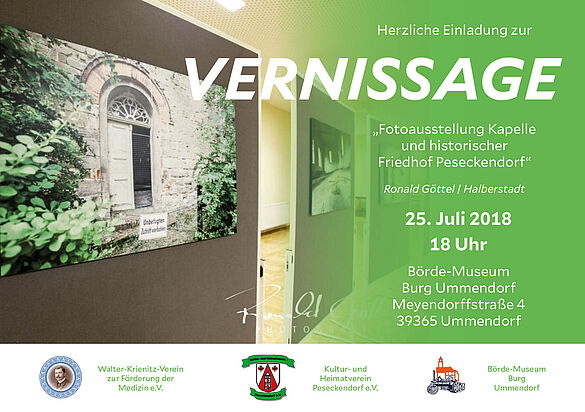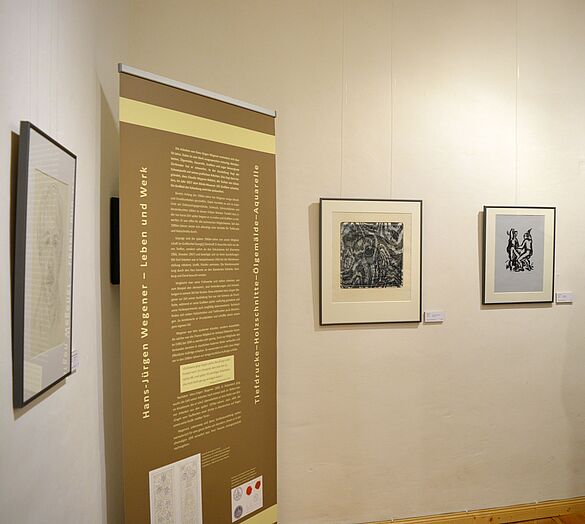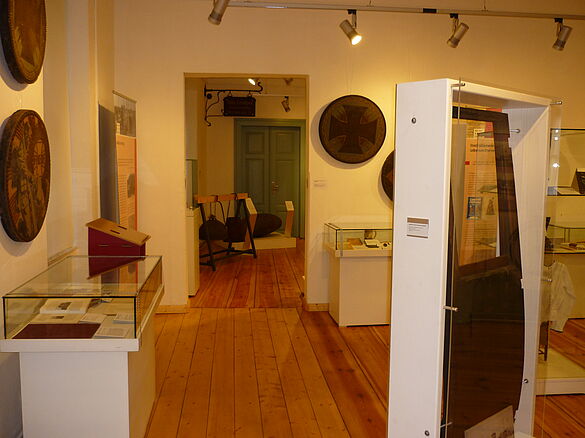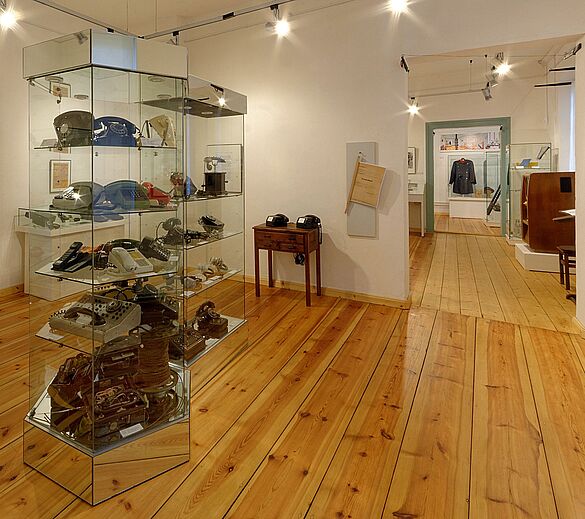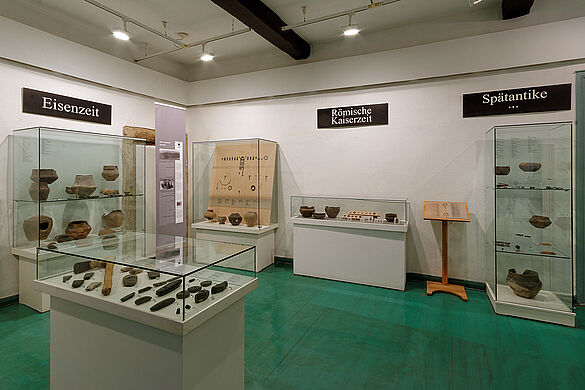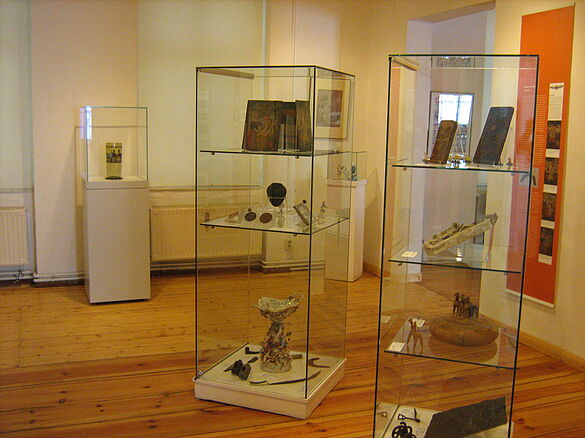Archiv Ausstellungen
Garagen KULTUR
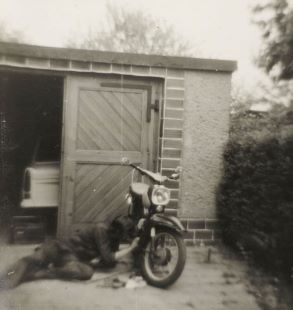
30. September - 30. November 2025
Garagenkomplexe in der DDR gehörten zum alltäglichen Leben. Ihre Entstehung ging zurück auf fehlende Stellplätze in den Ortslagen am Ende der 1960er-Jahre. Sie waren ein Treffpunkt nach Feierabend. Dort wurde nicht nur geparkt, sondern auch an PKWs und Zweirädern geschraubt und aufgemotzt. „Es waren individuelle Räume, die oft den Charakter der Nutzer zum Ausdruck brachten. Gerne wurden sie auch als verlängertes Wohnzimmer bezeichnet," beschreibt die Museumsleiterin Frau Dr. Nadine Panteleon.
Die Zeit hat sich geändert. Heute sind Garagen oft an Wohnhäuser angeschlossen, oft geht man sogar trockenen Fußes bis in die Garage. Während man früher dafür erst auf das Rad stieg. Diese und andere kulturellen Veränderungen möchte die Ausstellung nachspüren und aufzeigen.
Himmel und Erde: Kirche, barocke Kirchenkunst und der Tod
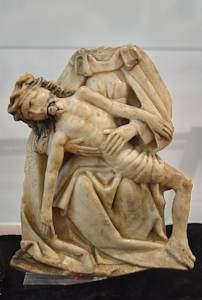
13. März 2025 bis 25. Juni 2025
Die Sonderausstellung bietet einen Einblick in die Verbindung von Kirche, Kunst und dem Thema Tod und vermittelt ein besseres Verständnis für liturgische Objekte und ihre Symbolik. Die Ausstellungsobjekte aus katholischen und evangelischen Kirchen der Region bieten die Gelegenheit, Unterschiede und Gemeinsamkeiten der verschiedenen Konfessionen zu entdecken.
Geschichte der Dinge - Sonderausstellung zum 100jährigen Jubiläm des Museums
Ceramics by Julia Himmelmann
Sept. 12, 2021 - Nov. 28, 2021
The interest of ceramic artist Julia Himmelmann during her home scholarship was the fertile Börderregion, the gender role of women and the powerful work of man and earth. Julia Himmelmann let her impressions flow into the creation of ceramic sculptures.
August 3 - October 3, 2019
This exhibition is a retrospective. It shows the photographic result of a practical excursion undertaken by 10 students of the Photography Department of the Academy of Visual Arts in Leipzig to the Börde from May 10 to May 23/24, 1977. The title of the exhibition "Curiosity is not a shame..." "...maybe you look for the neighbour and find yourself" was already chosen by the students of 30 years. The images come from different thematic areas: education, social improvements, the new brickyard, people, from agriculture, architecture: the heritage - The present and sandstone. For example, Hans Martin Sewcz photographed the then museum director Heinz Nowak and his wife Käthe in their living room. Other photographers are: Erdemtijn Altanbulag, Ludwig Daume, Margit Emmrich, Klaus-Peter Fritzsche, Hartmut Hilgenfeld, Wesselina Milkowa, Hans-Martin Sewcz, Ngyen van Thanh, Kieu minh Viet and Jaroslaw Wojczyk.
10 June 2018 - 03 October 2019
This special exhibition looks back on 40 years of GDR music history. Characteristic instruments and technical equipment, as used by professional and amateur musicians, illustrate the musical epoch between 1949 and 1990. The instruments and musical technology presented come from the private collection of Bernd Braun, a professional musician from Ausleben, who played in GDR times with the Magdeburg Dance Orchestra and the band CONDOR, among others.
July 2 - December 2, 2018
The photographer Ronald Göttel (Halberstadt) has dedicated himself to Peseckendorf in his photo series. Numerous photographs of the chapel and cemetery were taken and are shown in the special exhibition. The spectrum ranges from overview shots to details and snapshots.
February 15 - May 27, 2018
At the center of the exhibition are graphics by Hans-Jürgen Wegener (1941-2016), which his daughter donated to the Börde Museum in 2017 and 2018. Hans-Jürgen Wegener born in 1941 in Magdeburg, died in 2016 in Weimar, made a locksmith apprenticeship in the 1950s and in the late 1960s a correspondence course in mechanical engineering. He was not a studied artist, but self-taught. In 1965 he joined the graphic circle Georgi(j) Dimitroff and became an active member of the circle. There, amateur artists like Wegener were just as involved as those working full-time in the arts and crafts. This marked the beginning of his lasting artistic work. The works in the exhibition were created between 1966 and 2015. Especially those graphics before the reunification are an ideal addition to the museum's collection.
April 9 - June 24, 2017
The traveling exhibition deliberately does not turn to the war situation on the two fronts, but opens a window on the living situation of the people in our region. The war has also left its traces far behind the front, which can still be discovered today. The exhibition gives an exemplary account of the effects of the war on private and public everyday life. The local everyday-historical but also private perspective of the war is told, among other things, by sailor collars, bread cutters, song booklets, toys, iron bracelets, ration cards, cookbooks, posters, field post letters, diaries, photos and much more.
The horse doesn't eat cucumber salad - Means of communication through the ages and their social significance
July 17 - December 3, 2017
The special exhibition presents various means of communication from the 19th century onwards. These include objects used for direct communication ─ such as the telephone ─ and indirect communication ─ such as bell pulls. The latter were used in large mansions with staff. But even in pre-Christian times, there was a need to transmit messages as quickly as possible, even over long distances. Even today, messages are transmitted by postal and courier services, with digital options steadily increasing. It was not until the new possibility of printing that daily newspapers and magazines spread at great speed. The mass media of radio and television were not invented until the 20th century.
April 29, 2016 - December 3, 2017
Objects from about 30 years of archaeological research activity of the Börde Museum are presented in this exhibition. The Magdeburg Börde with its fertile soils has a high density of archaeological finds. These include, for example, the copper axes from Belsdorf, the Latène bronze belt jewelry from Hadmersleben and the grave inventories of the Migration Period from Altenweddingen. These highlights of the collection are being shown for the first time in a joint exhibition and, as witnesses of past epochs, convey a lot about the way of life of the people.
June 13 - November 27, 2016
Since time immemorial, man has had to provide for his food. Agriculture is therefore one of the oldest subjects and is reflected not only in historical equipment but also in a large number of illustrations. They show how popular, important and omnipresent the topic of agriculture is. It is therefore the small things that are the focus of the special show, such as models true to the original, but also representations on coins or on ceramics.
April 12 - November 29, 2015
Georg Kolbe (1877-1947) is considered one of the most successful German sculptors in the first half of the 20th century. His oeuvre includes a number of commissioned works. The figures exhibited in the Börde Museum since 1974 are also commissioned works. They embody the "Four Seasons" and were made to decorate the main entrance of the new manor house in Peseckendorf.
November 17, 2014 until May 31, 2015
The Ummendorf Museum opened its doors for the first time on November 16, 1924. A special exhibition reviews these beginnings and the following ninety years of museum work. Archival documents, photographs and objects from the collection show visitors the history of the museum and provide examples of the structural changes that the castle grounds have undergone. At the same time, the exhibition offers a glimpse behind the scenes of the museum's work.

